Learning Korean from Korean drama O.S.T : Winter Child (겨울 아이)
Since the song ‘Winter Child’ was first sung by JongYong, Lee in 1990, this song has been remade by many singers. ‘Winter Child’ was again highlighted by Suzy, member of Miss A. Suzy sang the song in Dream High which is very popular drama in Korea. The lyrics of the song are so lovely and beautiful. So, the song is sometimes sung for a birthday song for people born in the winter.
Shall we learn this song?
겨울에 태어난 아름다운 당신은
Gyeoure taeeaonan areumdaun dangsineun
(Beautiful you born in the winter)
눈처럼 깨끗한 나만의 당신
nuncheoreom ggaekkeotan namane dangsin
(My darling you white as the snow)
겨울에 태어난 사랑스런 당신은
Gyeoure taeeaonan sarangseureon dangsineun
(Lovely you born in the Winter)
눈처럼 맑은 나만의 당신
nuncheoreom malgeun namane dangsin
(My darling you pure as the snow)
하지만 봄 여름과 가을 겨울
hajiman bom, yeoreumgwa gaeul gyeoul
(But ….spring, summer, fall and winter)
언제나 맑고 깨끗해
eonjena malggo ggaekketae
(You’re always pure and lovely)
겨울에 태어난 아름다운 당신은
Gyeoure taeeaonan areumdaun dangsineun
(Beautiful you born in the winter)
눈처럼 깨끗한 나만의 당신
nuncheoreom ggaekkeotan namane dangsin
(My darling you white as the snow)
생일 축하합니다 생일 축하합니다
sangil chukkahamnida *3 (Happy birthday)
생일 축하합니다 당신의 생일을
dangsine sangireul
Happy birthday to you. (Happy birthday to you.)
There are four seasons in Korea. 봄(spring) 여름(summer) 가을(fall)and 겨울(winter). If you were born in the winter, you can say “저는 겨울에 태어났어요 (jeoneun gyeoule ttaeenatsseoyo)”
-에 is a time marker. 저는 여름에 태어났어요. It means “I was born in the summer.” Then, “in the spring” becomes “봄에”. 태어났어요 is the past tense which means “were/was born”
당신(dangsin) is an honorific expression of “너(neo/ you)” but you need to be aware of how to use this word properly. Because it is used for the most honorific title or poetic expression, you may be confused how to suitably use the word. In this song, 당신 is used for the kind of poetic expressions. If you improperly use the title “당신” to the elder, you would seem rude on the contrary.
How can you say “Happy birthday!” in Korean? It is “생일 축하합니다.” 생일(sangil) means birthday and 축하합니다(chukkahamnida) means congratulations on~. You can use this expression in some ways. For example, “Congratulations on your graduation” is 졸업 축하합니다 in Korean. 졸업(joreop) is graduation. You can put any word in front of 축하합니다. So, the basic form is something 축하합니다. Instead of 졸업, 결혼 (gyeoron, marriage) can be put. 결혼 축하합니다. The form of –합니다 is formal polite sentence so normally, you may say just with 축하해요. Altogether, 생일 축하해요. 졸업 축하해요. 결혼 축하해요. Those expressions are still polite.
You can enjoy 겨울아이 (Winter Child) on Youtube.
http://www.youtube.com/watch?v=nGNS2F1fb5c&feature=related
Is it so interesting to learn Korean form Korean OST and songs? Next time, let’s learn another song and useful expressions. 감사합니다
Korean teacher, Sarah Yong.
Go-Stop_ A national card game in Korea
Go-Stop (고스톱) is a Korean card game. Go-Stop is also known as Godori (고도리), the name of a winning move in the game, Hwatu (화투) as this is the name of the cards used to play the game and also as Matgo (맞고), the latter implicating that only two players are playing.
Go-Stop is played with hanafuda cards using a different point system. The cards are referred to as hwatu (화투) in Korean. In addition, a deck of Korean hwatu cards usually includes bonus cards. Most households own a deck of hwatu and they are as common in Korea as the standard 52 deck cards are in the Western world.
Typically, there are two or three players, although there is a variation where four players can play. The general point of this game is to score a minimum number of points, usually three or seven, and then call a “Go” or a “Stop” (this is where the name of the game is derived from). When a “Go” is called, the game continues, and the amount of points or money is first increased, and then doubled, tripled, quadrupled and so on, though the latter being very rare. If a “Stop” is called, the game ends and the winner collects the winnings.
Typical games between experienced players move very quickly.
오빤 강남 스타일 The new mainstream of K-pop
Korean-pop rapper Psy’s video “Gangnam Style” is taking over the world.
Gawker suggested“Gangnam Style” may be the best music video of the year. American auto-tune aficionado T-Pain tweeted, “Words cannot even describe how amazing this video is…” And Scooter Braun, who manages pop-munchkins Justin Bieberand Carley Rae Jepsen tweeted, “HOW DID I NOT SIGN THIS GUY!?!??!… GANGNAM STYLE!!!! #THEGREATEST. “
The video features Psy, also known as Park Jae-sang, in various upscale locations doing a funky horse riding dance. A couple of famous Korean comedians make cameo appearances in the video, so does a member of the Korean pop group 4Minute–she’s the girl with the red hair wearing the blouse decorated with billiard balls.
The video became a huge online hit in Korea about a week before it reached viral success throughout the world, said Kevin Allocca, YouTube trends manager. As of Thursday the video was one of the most shared videos in South Korea, as well as the U.S., U.K., Canada, Australia, Singapore and Sweden.
It’s not just the Olympics that brings together the citizens of the world, people. It’s also completely insane, hilarious, high-energy music videos.
Learning Korean from Korean drama O.S.T : Secret Garden
Secret garden is a kind of fantasy love story about the happenings between Kim Joo Won (Hyun Bin), an arrogant and eccentric CEO and Gil Ra Im (Ha Ji Won), a poor and humble stuntwoman. The man is embarrassed at himself who is falling in love with the lady lives in a totally different world. Accidently, their bodies are swapped and they are getting to know each other more and more. Love is like a secret garden which cannot be logically explained. “Why do you love the man/woman?” Could you give an exact answer to the question when you fall in love? Love is a kind of magic. Isn’t it? The drama, Secret garden was my favorite and I had to keep moving on the next scenes. I never stopped to watch the drama. Lovely expressions and fantastic scenes of the drama are still waving in my heart. Especially, OSTs of the drama are great. Shall we learn some Korean from the drama O.S.T?
그 남자 (geu namja / The man)
한 남자가 그대를 사랑합니다
그 남자는 열심히 사랑합니다
매일 그림자처럼 그대를 따라다니며
그 남자는 웃으며 울고있어요
얼마나 얼마나 더 너를 이렇게 바라만 보며 혼자
이 바람같은 사랑 이 거지같은 사랑
계속해야 니가 나를 사랑 하겠니
조금만 가까이 와 조금만
한발 다가가면 두 발 도망가는
널 사랑하는 난 지금도 옆에 있어
그 남잔 웁니다
그 남자는 성격이 소심합니다
그래서 웃는 법을 배웠답니다
친한 친구에게도 못하는 얘기가 많은
그 남자의 마음은 상처투성이
그래서 그 남자는 그댈 널 사랑 했데요 똑같아서
또 하나같은 바보 또 하나같은 바보
한번 나를 안아주고 가면 안돼요
난 사랑받고 싶어
그대여 매일 속으로만 가슴 속으로만
소리를 지르며그 남자는 오늘도
그 옆에 있대요
그 남자가 나라는 걸 아나요
알면서도 이러는 건 아니죠
모를꺼야 그댄 바보니까
얼마나 얼마나 더 너를 이렇게 바라만 보며 혼자
이 바보같은 사랑 이 거지같은 사랑
계속해야 니가 나를 사랑 하겠니
조금만 가까이 와
조금만 한발 다가가면 두 발 도망가는
널 사랑하는 난 지금도 옆에 있어
그 남잔 웁니다
Could you look at the first sentence? 한 남자가 그대를 사랑합니다. Let’s start from 한. 한 (han) means one. 남자 (namja) means “man”. 그대를 (geudaereul) means you. 사랑합니다 (saranghamnida) means “love “. So this expression means that one man loves you.
Let’s move on the third pharagraph. 조금만 가까이 와. (jogeumman gaggai wa). 조금만 means a little bit. 가까이 means close to. 와 means come. So, this expression means “Come a little closer to me”
한발 다가가면 두발 도망가는 means if I approach a step closer to you, you take two steps backwards. 한 (han) means one. 발 (bal) means step. 두(du) means two. So 두발 means two steps.
널 사랑하는 난 지금도 옆에 있어 means that I who love you am still beside you. 옆 (yeop) means beside or next to and 지금도(jigeumdo) means still.
The most beautiful expression in the world is “I love you”, I think. You can say “사랑합니다 (saranghamnida)” in Korean. 사랑합니다. J
-Sarah Yong (Korean Teacher)
How to Learn Your First Korean Faster
If you are a native speaker of English, you will be stressed to understand the basic Hangeul systems when you start your very first Korean lesson, since it is very different with English in terms of word order, rhythm and cultural issues (i.e. politeness).
However, you will then realize that Hangul, the Korean script, even initially may look like Chinese or Japanese, but it is much easier to learn since the characters are a combination of 24 letters and some variations, an alphabet, rather than a few thousand more or less random drawings.
There is no shortcut in any language learning since it is the universal process that you will get a better result if you try harder and dedicate more time. However, indeed, there are some smarter ways to learn Korean language. What are the key factors that facilitate your Korean learning?
1. Make some positive excuses.
Imagine if you can say hi to the pretty Korean classmate in Korean language in your tutorial class at uni or the hot waiter obba in the Korean BBQ restaurant in the city. Very exciting indeed.
2. Use raw materials
You think your Korean is so slowly improving but you don’t have any native Korean friends to help you?? In fact, your learning materials are everywhere in this 21st century. Are you watching Running man or Ultimate Challange every week? Or a big fan of Cnblue? You can make them as your private tutor. There are so many cultural contents on the web which you can use for your learning. There is no doubt that those reality programs will help you since they show you raw Korean talking within real Korean contexts.
3. Escape from your early-Korean- reading- stage as soon as possible
As you know, mastering Korean alphabet is not that tricky since they are phonetically scientific and a lot simpler than other languages. If you want to be an intermediate or above Korean learner, try to overcome your difficulties in terms of Korean learning. I am sure that you will see a lot brighter and exciting sides once your reading is completely mastered.
Fighting : ) !
Ashley (Korean Tutor)
South Korean Men and Their Mandatory Military Service
Students often ask me that “My favourite K-pop singer should join the national army soon… why?”
Yes. Unlike Australia or US, military service in South Korea is compulsory. Hence, all males in South Korea between the age of 18 and 35, physically and mentally able, to do their share in national defense for 2.3 to 3 years and no one can avoid this duty unless they are physically ill.
Moreover in some cases, South Korean men over the age of 18, including Koreans with foreign citizenship, were subject to compulsory military service. From a law that was effective since 2005, a dual citizen could not be allowed to abandon his Republic of Korea citizenship until he finished his military service, or had received a special exemption from military service.
In several cases, men of South Korean descent holding U.S. citizenship visiting from overseas had been drafted upon visiting the country, despite having never been there before and not having Korean citizenship.
Insa-dong (인사동): A must-see in Seoul, Korea
Insa-dong (인사동) is a must for Seoul tourist. To experience the traditional culture of Korea while staying in Seoul, visit Insa-dong. Insa-dong Street is one of the most memorable landmarks to represent you Korean traditional crafts and culture. With art galleries, traditional craft stores, antique art shops, traditional tea cafes and restaurants, it should be everything for visitors wanting to experience real Korean traditions. Especially, stores in Insa-dong are good for a wide kind of antiques-old paintings, antique furniture, ceramics, paper crafts, hanbok (한복/ traditional clothing), hanji (한지, traditional paper), and folk crafts can all be found in abundance.
Insa-dong Street stretches over 700 metres between the Anguk-dong Rotary (안국동 로터리) and Tapgol Park (탑골 공원). It is a quite long street. The art galleries (Insa Art Gallery, Dong Duk Art Gallery, Gana Art Space, Insa Art Centre…) in this area also make Insa-dong ideal place as a Korean cultural attraction. In 1999, Queen Elizabeth II visited the area and expressed deep admiration for the hanbok(한복/ Korea’s traditional dress) and for Korean pottery in particular. On weekends, the street is vehicle-free and flea markets are set up. Travelers from abroad also join the flea market with various goods from all over the world. So you could enjoy multicultural goods and events there.
Insa-dong creates unique atmosphere which is mixed up Korean traditions and young energy. Do not miss souvenir shops in Insa-dong. You could purchase Korean traditional souvenirs for your family and friends at a reasonable price. You can have help from the Insa-dong Information Centre (Tel: 82-2-737-7890) located 100m from Ssamjigil (쌈지길) toward Jogyesa Temple (조계사). The centre provides tourism information, interpretation services and free internet access.
By Sarah Yong (Korean teacher)
Children’s Day in Korea (May 5)
In South Korea, May 5 is officially recognized as Children’s Day (어린이날). Parents often give presents to their children, as well as spend time with them. The children are taken on excursions to zoos, museums, and various venues of children-oriented entertainment.
From Jinju, many people gathered to promote and to improve the social status of children and encourage adults to teach awareness. The predominant figure, Bang Jeong Hwan (방정환) greatly contributed the enhancement of participation from the Korean intellectuals, while the Labourer’s Day also tapped together and moved the day toward May 5 . Bang Jeong Hwan first coined the modern Korean word for children, eorini (어린이).
It is one of the most exciting national holidays in Korea which is full of people who want to enjoy Korea’s beautiful spring day with their lovable family members.
– Ashley (Korean Teacher)
Bulgogi: The king of Korean BBQ
The word Bulgogi (불고기) literally means “fire meat” in Korean, which refers to cooked marinated meat, applied old traditional grilling techniques using gridirons or perforated dome griddles that sit on braziers, unlike deep frying or boiling in water.
Bulgogi is made from thin slices of sirloin or other prime cuts of beef. Before cooking, the meat is marinated to enhance its flavour and tenderness with a mixture of soy sauce, sugar, sesame oil, garlic, pepper and other ingredients such as scallions, onions or mushrooms, especially white button mushrooms or shiitake. Sometimes, cellophane noodles are added to the dish, which varies by region and specific recipe.
Bulgogi is traditionally grilled, but pan-cooking is common as well. Whole cloves of garlic, sliced onions and chopped green peppers are often grilled or fried with the meat. This dish is sometimes served with a side of lettuce or other leafy vegetable, which is used to wrap a slice of cooked meat, often along with a dab of ssamjang, or other side dishes, and then eaten as a whole.
– Ashley (Korean Teacher)
Counting Units in Korean
In English, one must say, “two sheets of paper” rather than “two papers”. In Korean, the term jang (장) is used to count sheets, or paper-like material in general. So “ten bus tickets” would be beoseu pyo yeol jang (버스 표 열 장), literally, “bus ticket ten ‘sheets'”. In fact, the meanings of counter words are frequently extended in metaphorical or other image-based ways (Lakoff, 1987).
For instance, in addition to counting simply sheets of paper, jang (장) in Korean can used to refer to any number of thin, paper-like objects. Leaves (namunnip 나뭇잎) are counted using this count word. In this way, the ways in which a particular count word can be used is generally very open-ended and up to the construal or creativity of the speaker.
There are two systems of numerals in Korean: native Korean and Sino-Korean. Native Korean numerals are used with most counter words. yeol gwa (열 과) would mean ‘ten lessons’ while sip gwa (십 과) would mean ‘lesson ten.’ Sino-Korean numerals are used with many time counters.
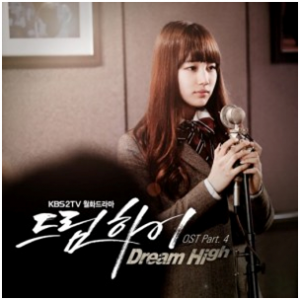
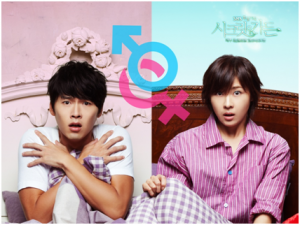
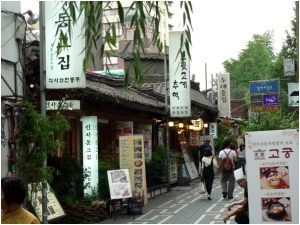
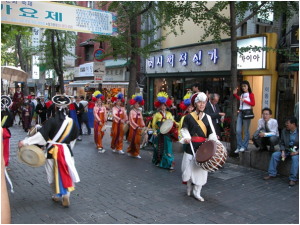

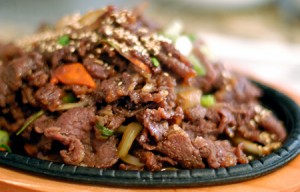




Latest Comments